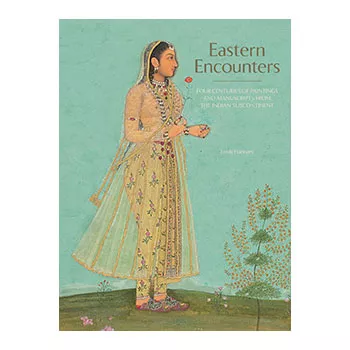Gita Govinda गीत गोविन्द (Song of the Cowherd) c. 1800
Opaque watercolour including metallic pigments and gold leaf on paper. | 45.0 x 3.0 x 36.0 cm (book measurement (inventory)) | RCIN 1005114
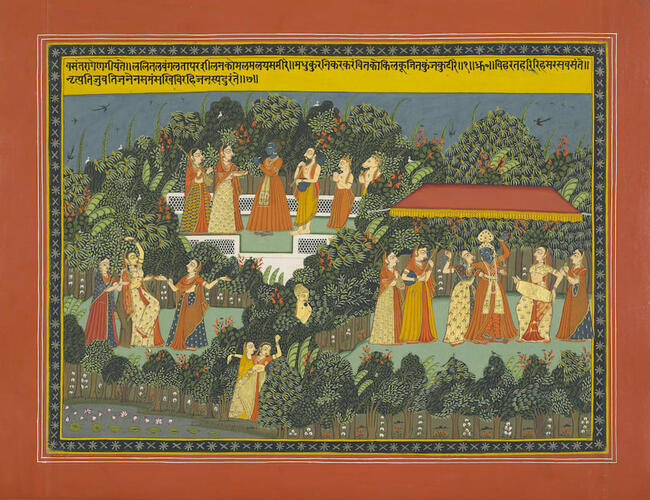
Rajput
Master: Gita Govinda ??? ??????? (Song of the Cowherd) Item: Gita Govinda ??? ??????? (Song of the Cowherd): song three verse one c. 1800
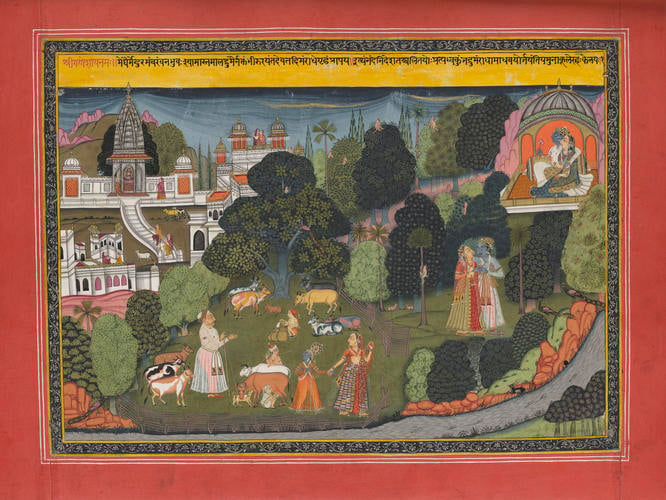
Rajput
Master: Gita Govinda गीत गोविन्द (Song of the Cowherd) Item: Gita Govinda गीत गोविन्द (Song of the Cowherd): introduction verse one c. 1800
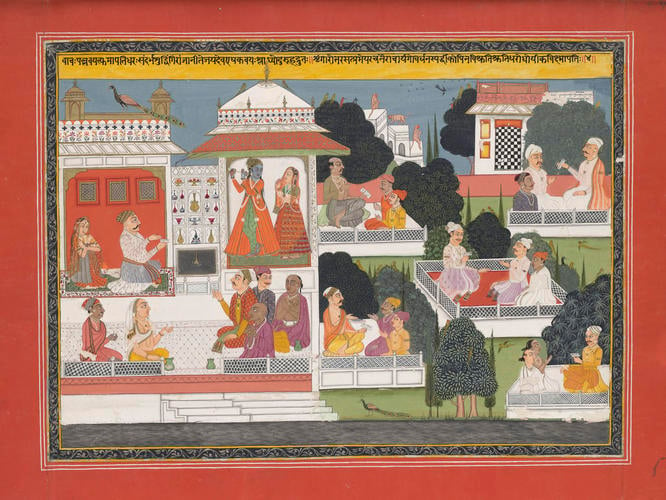
Rajput
Master: Gita Govinda गीत गोविन्द (Song of the Cowherd) Item: Gita Govinda गीत गोविन्द (Song of the Cowherd): introduction verse four c. 1800

Rajput
Master: Gita Govinda गीत गोविन्द (Song of the Cowherd) Item: Gita Govinda गीत गोविन्द (Song of the Cowherd): song one verse four c. 1800
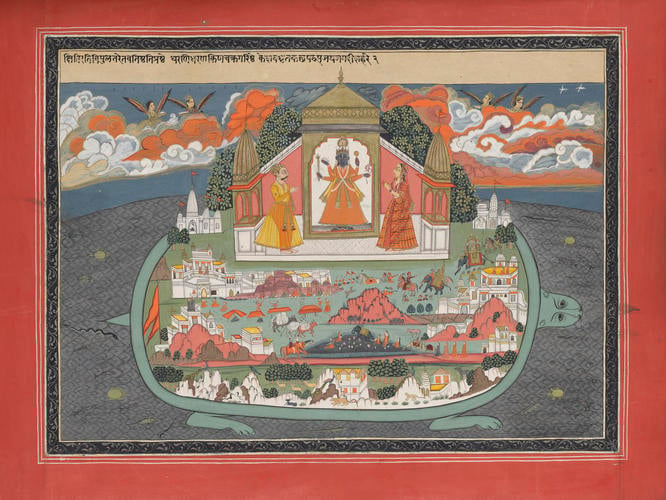
Rajput
Master: Gita Govinda गीत गोविन्द (Song of the Cowherd) Item: Gita Govinda गीत गोविन्द (Song of the Cowherd): song one verse two c. 1800
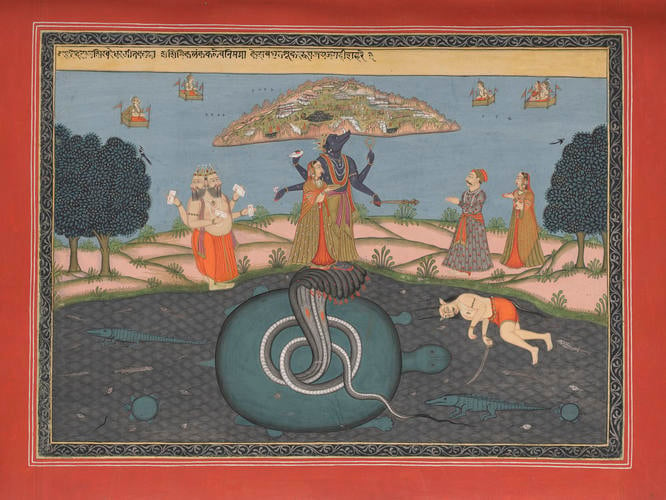
Rajput
Master: Gita Govinda गीत गोविन्द (Song of the Cowherd) Item: Gita Govinda गीत गोविन्द (Song of the Cowherd): song one verse three c. 1800
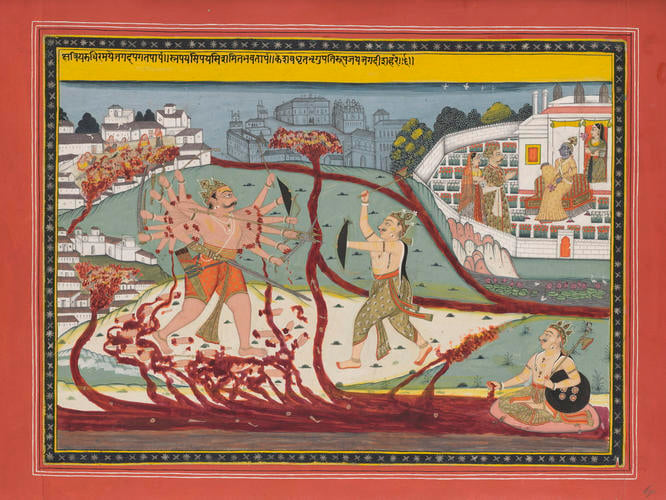
Rajput
Master: Gita Govinda गीत गोविन्द (Song of the Cowherd) Item: Gita Govinda गीत गोविन्द (Song of the Cowherd): song one verse six c. 1800
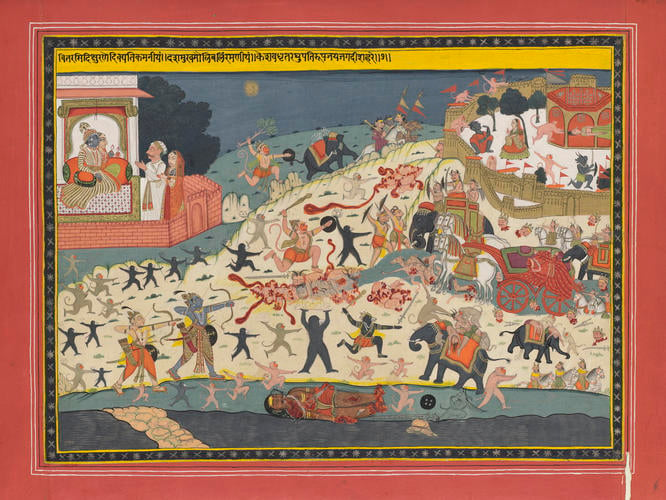
Rajput
Master: Gita Govinda गीत गोविन्द (Song of the Cowherd) Item: Gita Govinda गीत गोविन्द (Song of the Cowherd): song one verse seven c. 1800
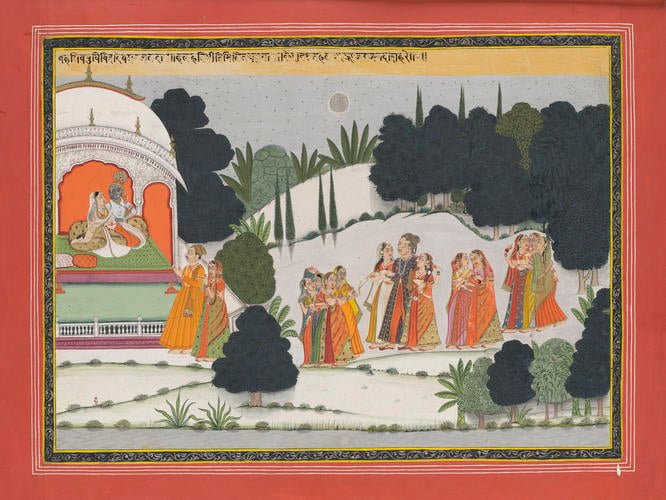
Rajput
Master: Gita Govinda गीत गोविन्द (Song of the Cowherd) Item: Gita Govinda गीत गोविन्द (Song of the Cowherd): song one verse eight c. 1800
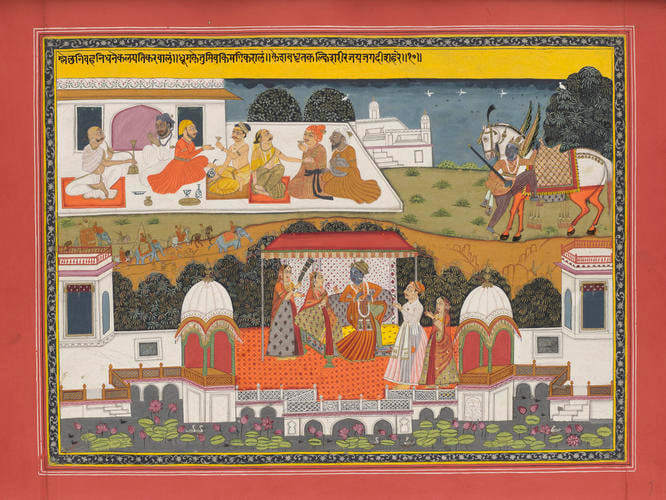
Rajput
Master: Gita Govinda गीत गोविन्द (Song of the Cowherd) Item: Gita Govinda गीत गोविन्द (Song of the Cowherd): song one verse ten c. 1800
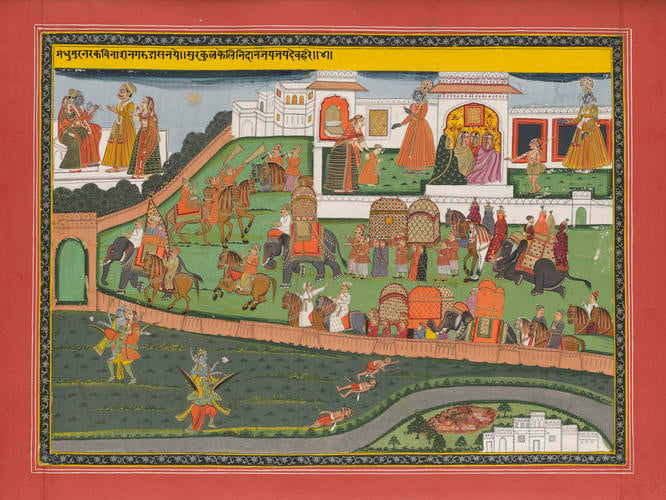
Rajput
Master: Gita Govinda गीत गोविन्द (Song of the Cowherd) Item: Gita Govinda गीत गोविन्द (Song of the Cowherd): song two verse four c. 1800
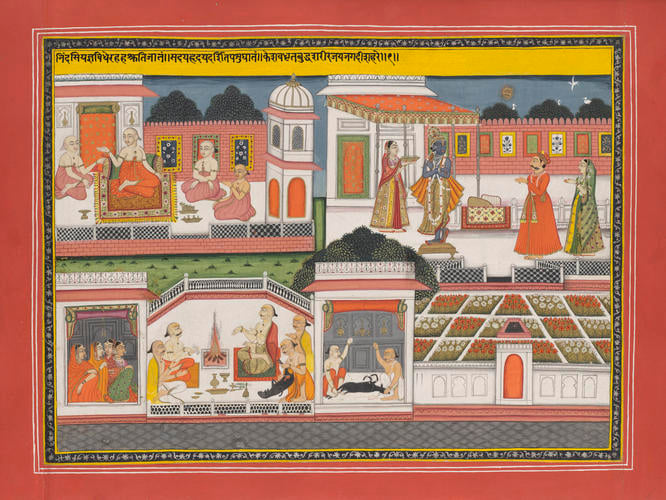
Rajput
Master: Gita Govinda गीत गोविन्द (Song of the Cowherd) Item: Gita Govinda गीत गोविन्द (Song of the Cowherd): song one verse nine c. 1800
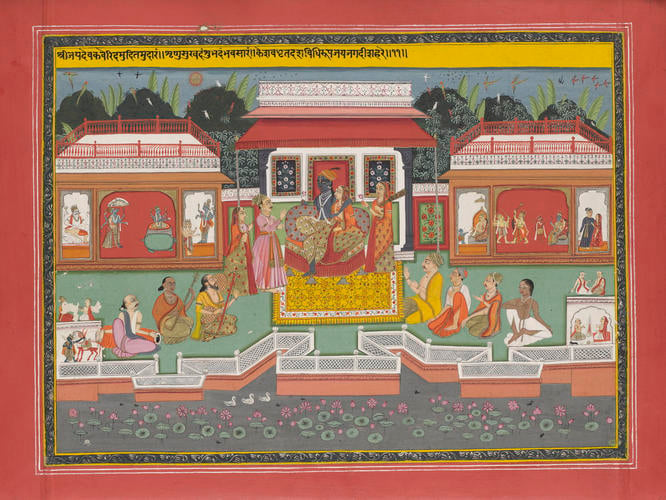
Rajput
Master: Gita Govinda गीत गोविन्द (Song of the Cowherd) Item: Gita Govinda गीत गोविन्द (Song of the Cowherd): song one verse eleven c. 1800
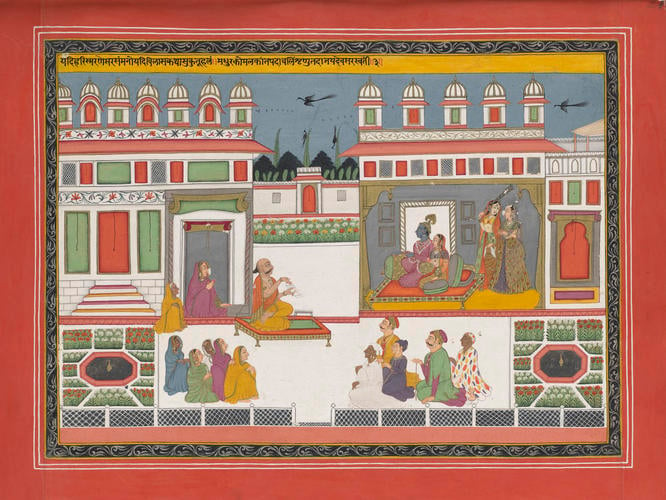
Rajput
Master: Gita Govinda गीत गोविन्द (Song of the Cowherd) Item: Gita Govinda गीत गोविन्द (Song of the Cowherd): introduction verse three c. 1800
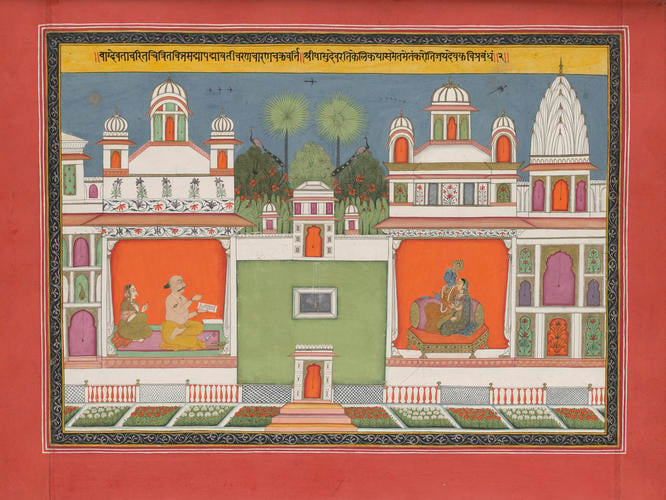
Rajput
Master: Gita Govinda गीत गोविन्द (Song of the Cowherd) Item: Gita Govinda गीत गोविन्द (Song of the Cowherd): introduction verse two c. 1800
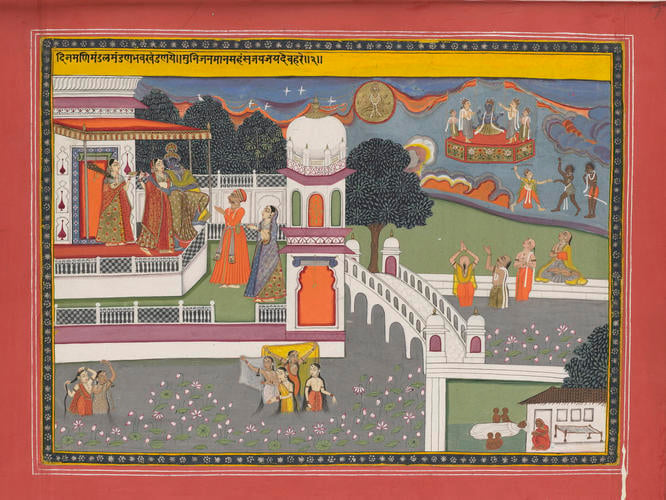
Rajput
Master: Gita Govinda गीत गोविन्द (Song of the Cowherd) Item: Gita Govinda गीत गोविन्द (Song of the Cowherd): song two verse two c. 1800
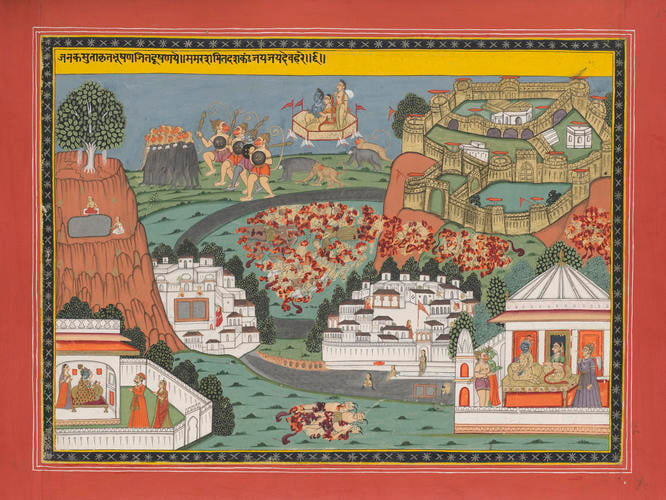
Rajput
Master: Gita Govinda गीत गोविन्द (Song of the Cowherd) Item: Gita Govinda गीत गोविन्द (Song of the Cowherd): song two verse six c. 1800
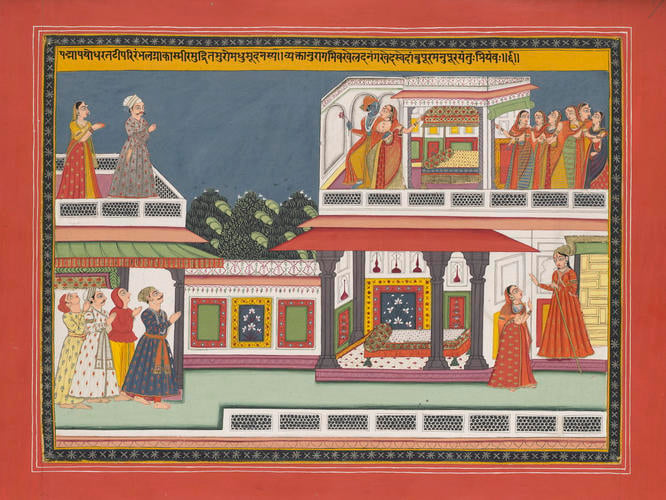
Rajput
Master: Gita Govinda गीत गोविन्द (Song of the Cowherd) Item: Gita Govinda गीत गोविन्द (Song of the Cowherd): song two verse ten c. 1800
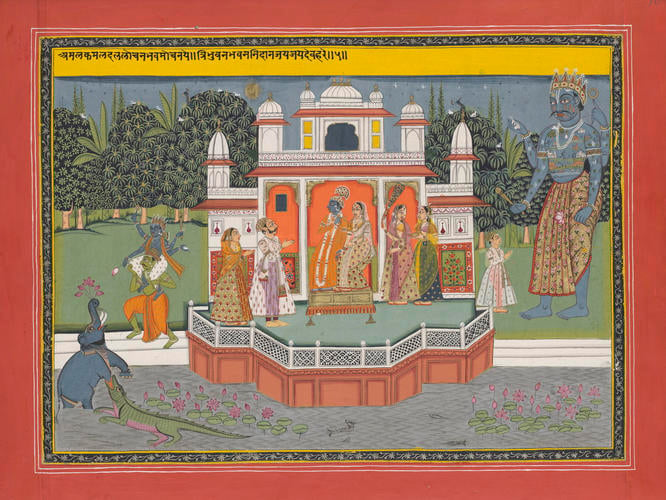
Rajput
Master: Gita Govinda गीत गोविन्द (Song of the Cowherd) Item: Gita Govinda गीत गोविन्द (Song of the Cowherd): song two verse five c. 1800
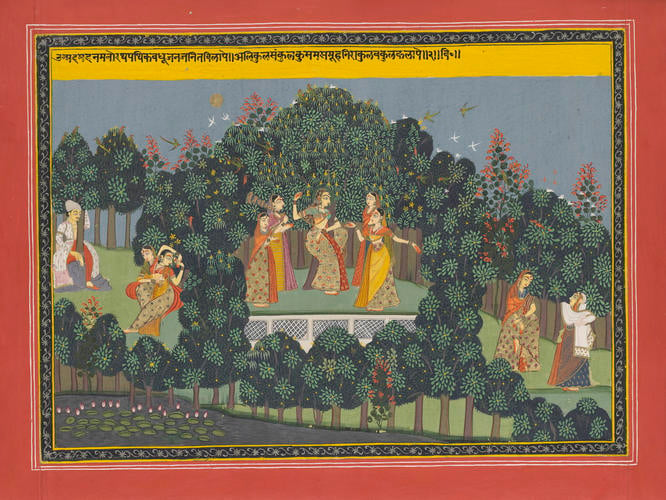
Rajput
Master: Gita Govinda गीत गोविन्द (Song of the Cowherd) Item: Gita Govinda गीत गोविन्द (Song of the Cowherd): song three verse two c. 1800




















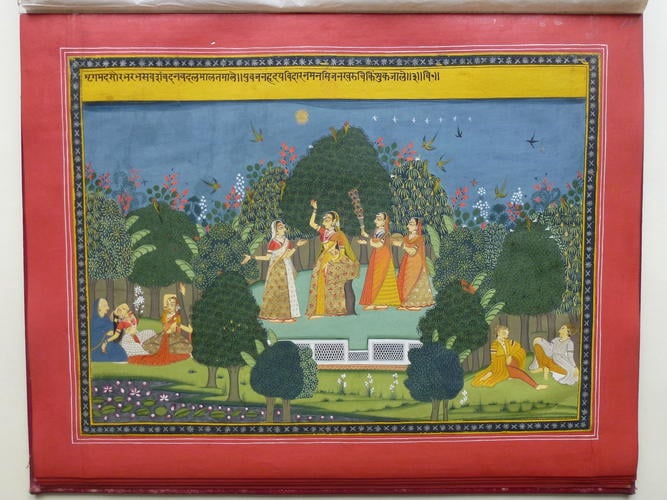
-
A series of paintings from Rajasthan reproducing verses from the 12th century Sanskrit devotional poem, Gita Govinda (‘Song of the Cowherd’) by Jayadeva.
Jayadeva’s protagonists are the Hindu god Krishna, the eighth incarnation of Vishnu, and his lover, the mortal cowherdess (gopi) Radha. This is thought to be the first literary references to Radha in any Hindu text. Their recurrent separations and blissful reunions are metaphors for the separation of the soul and the Divine and their ultimate ecstasy in union.
The Gita Govinda is a lyric poem composed as a cycle of 24 songs, each consisting of eight verses. The Royal Collection’s group of paintings illustrates 24 verses from the beginning of the poem up to the middle of the third song. They comprise the first part of what would originally have been a series of nearly 200 loose folios. The opening verses introduce the poem and the poet; the first song introduces the ten avatars of Vishnu (see also RCINs 1005113 and 1005114) and the Radha and Krishna narrative begins in the second song.
Stylistically, the series can be connected to artists of Amber, the old state capital of Jaipur in Rajasthan. The paintings are characterised by their bright palette, particularly strong reds and Indian yellow. The division of space into two or more planes is defines different times and places within a single frame.
The artists depict patron figures as active participants within the paintings which appear to be portraits of earlier Kachhwala rulers of Amber and Jaipur. The series is likely to have been commissioned by Maharajah Pratap Singh (r. 1778–1803), himself a poet and many of whose own writings elaborated on the Radha–Krisha theme.
The paintings were bound into a red morocco album in the late 19th century, inscribed: 'Exploits of seven and eight incarnations of Hindoo god Vishnu / viz / Ram & Krishna'. This was one of three albums presented to Albert Edward, Prince of Wales, on 27th November 1875 in Bombay (Mumbai) when he attended the wedding celebrations for the son of Sir Mangaldas Nathubhoy (1832-1890), a local businessman and social reformer. The other albums are RCINs 1005113 and 1005115.Provenance
Presented to King Edward VII when Prince of Wales during his tour of India in 1875 by Mangaldas Nathubhoy.
-
Creator(s)
(artist)(poet)Acquirer(s)
-
Medium and techniques
Opaque watercolour including metallic pigments and gold leaf on paper.
Measurements
45.0 x 3.0 x 36.0 cm (book measurement (inventory))
Place of Production
Jaipur [Rajasthan]




